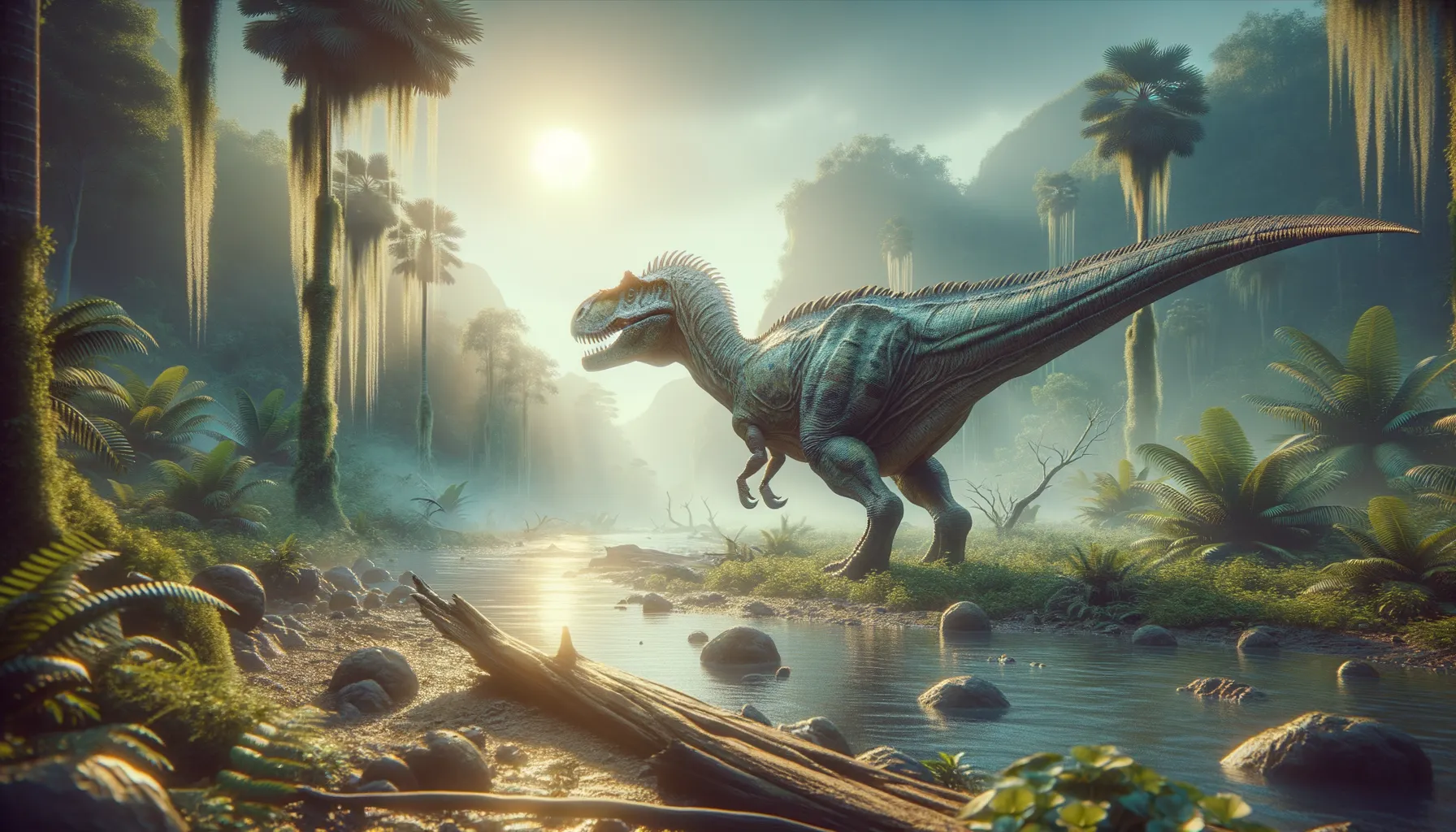
Shidaisaurus
Unveiling the mysteries of Jurassic predators.
Period
Jurassic
Length
Measured around 8 meters in length.
Height
Stood about 2 meters tall at the hips.
Weight
Weighed approximately 300 kilograms.
Shidaisaurus was a theropod dinosaur that roamed the Earth during the Middle Jurassic period. Known for its intriguing combination of features, it was a medium-sized carnivore that inhabited what is now China. Its fossils provide valuable insights into the evolutionary path of theropod dinosaurs, bridging gaps in our understanding of how these creatures adapted over time. This dinosaur showcases the complex ecosystem of the region and era in which it lived.
Diet
Shidaisaurus was carnivorous, feeding on smaller animals and possibly scavenging on carcasses. Its diet likely included small to medium-sized dinosaurs and other prehistoric creatures of its time.
Hunting
It is believed that Shidaisaurus was an opportunistic hunter, relying on surprise and speed to catch its prey. Its sharp teeth and agile body made it well-suited for predation in its environment.
Environmental challenges
Shidaisaurus lived in a dynamic environment with active geological changes, which occasionally disrupted its habitat. The shifting landscapes and climate fluctuations required adaptability for survival. Predation pressure not only from larger theropods but also from environmental factors, may have influenced its behavior and development.
Speed
Moderate, estimated to be around 25 km/h.
Lifespan
Estimated to live around 20-30 years.
First discovery
Found in Yunnan, China, in the early 2000s.
Fun Facts
- Shidaisaurus is a lesser-known dinosaur that roamed the Earth during the Middle Jurassic period, around 170 million years ago.
- This dinosaur was a carnivore, meaning it primarily fed on other animals.
- Shidaisaurus remains were discovered in the Yunnan Province of China, giving us a glimpse into prehistoric life in Asia.
- It was part of the theropod group, the same category of dinosaurs that includes the famous Tyrannosaurus rex.
- Shidaisaurus walked on two legs and had sharp teeth that it likely used to catch its prey.
- The name 'Shidaisaurus' means 'Shidai lizard', named after the Yunnan Shida University.
- Despite its fearsome appearance, Shidaisaurus was relatively small compared to some of the larger carnivorous dinosaurs.
Growth and Development
As a juvenile, Shidaisaurus likely grew at a steady rate, developing strong limbs and a robust body to support its hunting lifestyle. Its growth phases would have been influenced by food availability and competition. Natural selection would have favored individuals with effective predation skills and adaptability to changing environments.
Habitat
Shidaisaurus inhabited forested areas and floodplains within a warm, humid climate. The lush vegetation provided ample cover for both predators and prey, supporting a diverse ecosystem. Water sources within these habitats were crucial for sustaining life, influencing the distribution of species in the region.
Interaction with other species
Shidaisaurus likely coexisted with other dinosaur species, including herbivores and fellow carnivores. Competition for food and territory would have shaped its interactions, impacting its survival strategies. Symbiotic relationships or niche partitioning may have reduced direct competition, allowing for coexistence within its ecosystem.
Natural lifespan
Its natural lifespan was around 20-30 years.
Reproduction
Shidaisaurus likely reproduced by laying eggs, with nesting sites possibly in secluded areas to protect them. Parental care behavior is uncertain, but some theropods are known to have monitored their nests to some extent. The reproduction rate and success would have been key factors in the species' survival and prevalence.
Social behaviour
It is speculated that Shidaisaurus could have exhibited solitary or small group behavior, similar to many theropods. Social structures would largely depend on food availability and predation threats. Cooperation, if present, might have been limited to hunting or defensive scenarios.
Fossil locations
The primary fossils of Shidaisaurus have been discovered in the Yunnan Province of China. These findings have provided significant insights into theropod diversity during the Middle Jurassic. Ongoing research may reveal more about its distribution and ecological roles.
